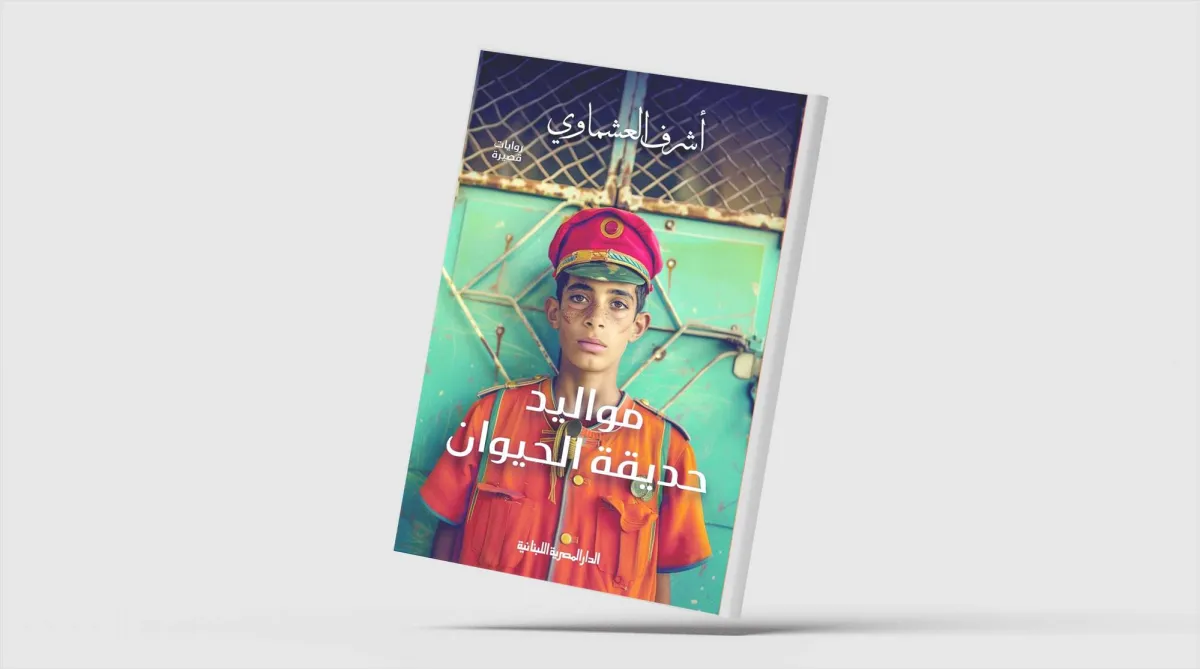Introduction to a Unique Literary Experience
The book "Born of the Zoo" by Ashraf al-Ashhmawi is a collection of three short novels that, despite their independent storylines and themes of love, are intricately connected by subtle threads. These threads, woven by the author, create a tapestry of fictional worlds that echo with each other, forming a complex narrative that explores identity, self, and the human condition.
Exploring the Novels
The book, published by the "Egyptian Libanese" in Cairo, consists of three novels: "Cabin that does not see the sea", "The pork", and "The birth of the zoo". Each novel presents a unique perspective on the questions of identity and the fragmented self, set against the backdrop of a world that is both overwhelming and oppressive. The author’s use of a visual narrative style draws the reader into the world of the characters, making them intimate with their details, fragilities, and the shadows they cast.
"Cabin that does not see the sea"
The first novel, "Cabin that does not see the sea", is distinct in its temporal setting, standing apart from the other two stories which are more contemporary and linked to the era of digital platforms. However, despite this progression in time, the legacy of oppression persists, a theme that is deeply explored. The story of a "grandson" who inherits the burdens of his "grandfather" serves as a powerful metaphor for the cyclical nature of oppression and the sacrifices made by individuals for the sake of their family’s reputation and livelihood.
"The Pigge Farm"
In contrast, "The Pigge Farm" delves into the concept of fate and identity through the absurd and paradoxical journey of its hero, Fayez Hanna. Fayez’s transformation from a Coptic pig farmer to a figure named "Sheikh Fayez Abdel Nabi" is a stark illustration of how individuals may find themselves entangled in webs of fate, leading lives that are not truly their own. This narrative, set against the backdrop of late President Anwar Sadat’s era, reflects on the religious militancy of the time and its profound impact on the lives of individuals like Fayez.
"Born in the Zoo"
The last novel, "Born in the Zoo", presents a climax of denial and fantasy through the story of Ismail, who finds himself bound to the walls of the "Löwenhaus", a zoo that becomes a symbol of his marital dreams and aspirations. The paradox of Ismail’s life, torn between his reality and his fantasies, underscores the theme of identity and the search for self in a world that often seems determined to suppress it.
Connecting the Dots
Throughout the three novels, the author weaves a common thread of visual imagery inspired by the animal world, drawing parallels between the lives of animals in captivity and the human experience. The use of metaphors such as the "roaring" engine of a car and the dream of a nightmare while in the episode of "Hyenas" creates a rich tapestry of meaning that underscores the frailty and complexity of human life.
The Crossword Puzzle of Life
The concept of a crossword puzzle is cleverly integrated into the narrative, symbolizing the search for meaning and identity. The heroine of the first novel, "Hayat", encapsulates this theme when she says, "All images deceive", highlighting the overlap between reality and absurdity, nourished by exploitation and grief. The crossword puzzle, appearing in different contexts across the novels, serves as a metaphor for the incomplete and often ambiguous nature of truth and identity.
Conclusion
The novels in "Born of the Zoo" offer a profound exploration of the human condition, delving into themes of identity, self, love, and the search for meaning in a complex and often oppressive world. Through its unique narrative style and the use of visual imagery, the book invites readers to reflect on the interconnectedness of human experiences and the eternal quest for understanding and connection.

